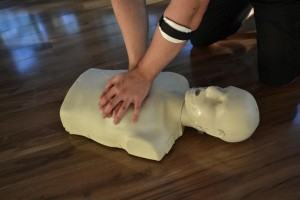Drowning is the main cause of death among children, including babies and toddlers. Most cases of drownings among infants occur in buckets and bathtubs. Toddlers between the ages of 1-4 usually drown in swimming pools. Nevertheless, many children included in this age group drown in rivers, ponds and lakes.
Drowning refers to death that occurs in the above stated scenarios. If a child was rescued before death, it is called a non-fatal drowning.
What should I do during a drowning emergency?
- Remove the child out of the water right away and check if he/she is breathing on his/her own. If not, perform CPR immediately.
- If there are bystanders, ask one to call for emergency assistance.
Continue delivering rescue breathing and CPR until the child can breathe on his/her own. Vomiting the swallowed water is likely during CPR. - Continue delivering rescue breathing and CPR until the child can breathe on his/her own. Vomiting the swallowed water is likely during CPR.
- Once the breathing is restored, stop and seek emergency help.
- Call for emergency assistance. Once the emergency team arrives, oxygen is administered and continue CPR if needed.
Is there a need for medical testing?
A child who nearly drowns must be given a complete medical assessment even if he/she appear fine.
If the child ceased to breath, inhaled water or lost consciousness, he/she must remain under close monitoring for at least 24 hours to ensure that there is no impairment to the nervous or respiratory system.
Recovery from a non-fatal drowning
The recovery of a child from a non-fatal episode depends on the time frame he/she was deprived of oxygen.
If underwater for a brief period, he/she is likely to recover completely. For longer periods without oxygen, it can damage the heart, lungs or the brain.
If a child does not respond rapidly to CPR, there might be a serious issue but it is vital to keep trying since sustained CPR could revive children who appeared lifeless or when submerged in cold water for long periods.
More Information / Disclaimer
The information posted on this page on drowning is for learning purposes only. Learn to manage drowning and its preventive measures by taking a standard first aid course with Toronto First Aid.

